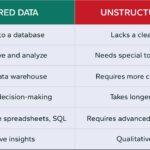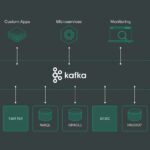Data deduplication is a crucial process in Big Data workflows aimed at eliminating redundant copies of data and ensuring efficiency in storage and processing. By identifying and removing duplicate data entries, organizations can optimize their storage resources, reduce operational costs, and enhance data quality and accuracy. In this article, we will explore the importance of data deduplication in Big Data workflows, the various methods and technologies available for performing this task, and best practices for implementing an effective deduplication strategy to unlock the full potential of Big Data analytics.
Understanding Data Deduplication in Big Data
Data deduplication is a critical process in Big Data workflows that focuses on eliminating redundant copies of data. It enhances data storage efficiency, reduces costs, and ensures data integrity across analytics and processing tasks. By removing duplicate records, organizations can achieve cleaner datasets, promote better decision-making, and streamline data processing pipelines.
Why is Data Deduplication Important?
In the world of big data, datasets can become exceedingly large and complex. Duplicate records may arise from various sources, including:
- Data imports from multiple systems
- Merge processes from different databases
- User input errors
- Replication of datasets across platforms
Each duplicate entry can lead to skewed analytics, inaccurate reporting, and wasted storage resources. By conducting effective data deduplication, organizations can:
- Improve data quality and accuracy
- Enhance the performance of analytics algorithms
- Reduce storage overhead and costs
- Boost operational efficiency
Techniques for Data Deduplication
There are several techniques for performing data deduplication in big data workflows, each suited for different environments and requirements:
1. Hashing
One of the most common deduplication techniques involves hashing, where each record’s data is processed through a hash function to generate a unique identifier. By comparing these hash values, you can easily identify duplicates without having to compare the entire record.
2. Fingerprinting
Fingerprinting is similar to hashing, but it relies on algorithms that create a compact summary of the data blocks. These fingerprints help in locating duplicates efficiently while handling large volumes of data.
3. Sorting and Grouping
This method involves sorting the data based on unique identifiers, then using a grouping operation to collapse duplicates. This is particularly effective for structured datasets, where sorting algorithms can organize records based on key attributes.
4. Machine Learning Approaches
With the rise of machine learning, advanced algorithms can be applied to detect duplicates. Techniques such as clustering can help in identifying similar records that may not be exact duplicates, allowing for more nuance in the deduplication process.
Implementing Data Deduplication in Big Data Workflows
Implementing data deduplication in big data workflows typically involves a series of structured steps. Here’s a guide to help you through the process:
Step 1: Data Assessment
Start by assessing your data sources. Understand the data’s structure, formats, and potential sources of duplication. Employ data profiling techniques to get a comprehensive view of what you’re working with.
Step 2: Define Key Attributes
Identify the key attributes that uniquely define records in your datasets. These attributes will serve as the basis for identifying duplicates. It may include fields like email addresses, customer IDs, or product SKUs.
Step 3: Choose the Deduplication Method
Select the deduplication technique that best fits your needs. For larger datasets, consider using hashing or machine learning approaches. For smaller datasets, sorting may be sufficient.
Step 4: Apply the Deduplication Process
Now, apply your chosen method to eliminate duplicates. If using hashing, start by creating hash values for all records and then filter them based on uniqueness. If employing machine learning, train your model on a sample dataset to recognize duplicates effectively.
Step 5: Validate Results
After deduplication, it’s important to validate the results. Sample the cleaned data to ensure that duplicates have been accurately removed and that no essential records have been lost in the process.
Step 6: Automate the Process
Once validated, consider automating your deduplication workflow using scripts or software tools. This ensures that future datasets are deduplicated consistently and efficiently, saving both time and costs.
Tools for Data Deduplication
Several tools and technologies can help facilitate data deduplication within big data environments. Here are a few popular options:
1. Apache Spark
Apache Spark is a powerful engine for large-scale data processing. It has built-in functions for data cleansing and deduplication, making it an ideal choice for big data workflows.
2. Talend
Talend provides a comprehensive suite of data integration and management tools that include features for identifying and removing duplicates effectively within vast datasets.
3. Dedupe.io
Dedupe.io is a cloud-based service designed explicitly for deduplication. It uses advanced algorithms to detect and merge duplicate records across various datasets.
4. Apache NiFi
Apache NiFi offers a robust framework to automate data flow, which includes features for deduplication, allowing users to create custom workflows that clean data on the fly.
Best Practices for Data Deduplication
When performing data deduplication in big data workflows, certain best practices can help ensure effectiveness and efficiency:
1. Establish Clear Standards
Define what constitutes a duplicate in your context to establish clear deduplication standards. This may vary from one business case to another.
2. Monitor Data Quality
Continuous monitoring of data quality is crucial. Set up periodic checks and balances to ensure data integrity and consistency over time.
3. Maintain Historical Records
Even after deduplication, consider maintaining a historical log of deleted records. This can be useful for auditing purposes and ensuring compliance with data governance standards.
4. Incorporate Feedback Loops
Create feedback mechanisms to learn from deduplication efforts. Analyze failed attempts to deduplicate or identified edge cases for improving future processes.
5. Document Processes
Keep comprehensive documentation of your data deduplication processes. This ensures to maintain transparency and aids in onboarding new team members effectively.
Challenges in Data Deduplication
While data deduplication brings numerous benefits, it poses several challenges that require attention:
1. High Volume of Data
Handling substantial volumes of data can complicate deduplication efforts. Efficient processing and resource allocation become critical in such scenarios.
2. Complexity of Data Structures
Datasets may include different formats and structures, making it challenging to define unique records accurately.
3. Real-Time Processing Needs
For organizations requiring real-time data processing, deduplication must occur rapidly to avoid latency in analytics and decision-making.
4. Evolving Data Sources
As new data sources are integrated into your workflows, establishing deduplication processes that adapt to these changes can be a continuing challenge.
Final Thoughts on Data Deduplication in Big Data Workflows
Effectively performing data deduplication is essential for any organization looking to harness the full potential of big data. By following best practices, employing the right tools, and proactively addressing challenges, enterprises can significantly improve their data accuracy, storage efficiency, and analytical capabilities.
Data deduplication is a crucial technique in Big Data workflows that helps optimize storage space, increase data quality, and improve overall performance. By efficiently identifying and removing duplicate records, organizations can enhance data processing speed, reduce costs, and ensure more accurate and reliable analytics results. Implementing data deduplication practices should be considered a fundamental step in managing and utilizing Big Data effectively.














